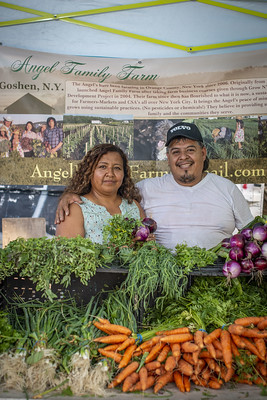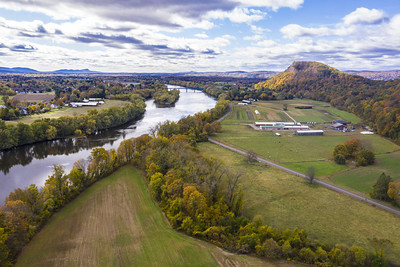In This Issue:
With Covid-19 cases rising throughout the country, New Jersey Service Centers are not accepting any in-office visitors. Farm Service Agency (FSA) and Natural Resources Conservation Service (NRCS) staff continue to work with agricultural producers via phone, email, and other digital tools.
Please visit our State Website for regulars updates on which offices are impacted at http://www.fsa.usda.gov/nj
 Feb. 4 is the deadline for agricultural producers who are certified organic, or transitioning to organic, to apply for the Organic and Transitional Education and Certification Program (OTECP). Signup for OTECP, administered by USDA’s Farm Service Agency (FSA), began Nov. 8.
Certified operations and transitional operations may apply for OTECP for eligible expenses paid during the 2020 and 2021 fiscal years during this signup period. Signup for the 2022 fiscal year will be announced at a later date.
For each year, OTECP covers 25% of a certified operation’s eligible certification expenses, up to $250 per certification category (crop, livestock, wild crop, handling and State Organic Program fee). This includes application fees, inspection fees, USDA organic certification costs, state organic program fees and more.
Crop and livestock operations transitioning to organic production may be eligible for 75% of a transitional operation’s eligible expenses, up to $750, for each year. This includes fees charged by a certifying agent or consultant for pre-certification inspections and development of an organic system plan.
For both certified operations and transitional operations, OTECP covers 75% of the registration fees, up to $200, per year, for educational events that include content related to organic production and handling in order to assist operations in increasing their knowledge of production and marketing practices that can improve their operations, increase resilience and expand available marketing opportunities. Additionally, both certified and transitional operations may be eligible for 75% of the expense of soil testing required under the National Organic Program (NOP) to document micronutrient deficiency, not to exceed $100 per year.
Producers apply through their local FSA office and can also obtain one-on-one support with applications by calling 877-508-8364. The program application and additional information can be found at farmers.gov/otecp.
Additional Organic Support
OTECP builds upon USDA’s Organic Certification Cost Share Program (OCCSP) which provides cost share assistance of 50%, up to a maximum of $500 per scope, to producers and handlers of agricultural products who are obtaining or renewing their certification under the NOP. Although the application period for OCCSP ended Nov. 1, 2021, FSA will consider late-filed applications for those operations who still wish to apply.
Meanwhile, USDA’s Risk Management Agency (RMA) recently made improvements to Whole-Farm Revenue Protection to make it more flexible and accessible to organic producers.
To learn more about USDA’s broader assistance for organic producers, visit usda.gov/organic.

USDA’s Farm Service Agency (FSA) is encouraging producers to contact their local USDA Service Centers to make or change elections and to enroll for 2022 ARC or PLC, providing future protections against market fluctuations. The election and enrollment period opened on Oct. 18, 2021 and runs through March 15, 2022.
Producers that have multi-year contracts and do not wish to make any changes do not need to take any action.
Producers can elect coverage and enroll in ARC-CO or PLC, which are both crop-by-crop, or ARC-IC, which is for the entire farm. Although election changes for 2022 are optional, producers must enroll through a signed contract each year. Also, if a producer has a multi-year contract on the farm and makes an election change for 2022, it will be necessary to sign a new contract.
If an election is not submitted by the deadline of March 15, 2022, the election remains the same as the 2021 election for crops on the farm. Farm owners cannot enroll in either program unless they have a share interest in the farm.
Covered commodities include barley, canola, large and small chickpeas, corn, crambe, flaxseed, grain sorghum, lentils, mustard seed, oats, peanuts, dry peas, rapeseed, long grain rice, medium and short grain rice, safflower seed, seed cotton, sesame, soybeans, sunflower seed, and wheat.
Web-Based Decision Tools
In partnership with USDA, the University of Illinois and Texas A&M University offer web-based decision tools to assist producers in making informed, educated decisions using crop data specific to their respective farming operations. Tools include:
- Gardner-farmdoc Payment Calculator, a tool available through the University of Illinois allows producers to estimate payments for farms and counties for ARC-CO and PLC.
-
ARC and PLC Decision Tool, a tool available through Texas A&M tallows producers to estimate payments and yield updates and expected payments for 2022.
Crop Insurance Considerations
ARC and PLC are part of a broader safety net provided by USDA, which also includes crop insurance and marketing assistance loans.
Producers are reminded that ARC and PLC elections and enrollments can impact eligibility for some crop insurance products.
Producers on farms with a PLC election have the option of purchasing Supplemental Coverage Option (SCO) through their Approved Insurance Provider; however, producers on farms where ARC is the election are ineligible for SCO on their planted acres for that crop on that farm.
Unlike SCO, the Enhanced Coverage Option (ECO) is unaffected by an ARC election. Producers may add ECO regardless of the farm program election.
Upland cotton farmers who choose to enroll seed cotton base acres in ARC or PLC are ineligible for the stacked income protection plan (STAX) on their planted cotton acres for that farm.
More Information
For more information on ARC and PLC, visit the ARC and PLC webpage or contact your local USDA Service Center.
|

The U.S. Department of Agriculture (USDA) Natural Resources Conservation Service (NRCS) is announcing several new opportunities for climate-smart agriculture in 2022. The update includes nationwide availability of the Environmental Quality Incentives Program (EQIP) Conservation Incentive Contracts option. This improvements to NRCS’ working lands conservation programs, combined with continued program opportunities in New Jersey, are part of the Biden-Harris Administration’s broader effort to support climate-smart agriculture.
“Climate change is happening, and America’s agricultural communities are on the frontlines,” NRCS State Conservationist Julie Hawkins said. “We have to continue to support and expand the adoption of conservation approaches to support producers in their work to address the climate crisis and build more resilient operations. We are continuously working to improve our programs to ensure we’re giving New Jersey farmers and ranchers the best tools to conserve natural resources.”
EQIP Conservation Incentive Contracts
Conservation Incentive Contracts address priority resource concerns, including sequestering carbon and improving soil health in high-priority areas. Through these contracts, NRCS works with producers to strengthen the quality and condition of natural resources on their operations using management practices, such as irrigation water management, drainage water management, feed management and residue and tillage management that target resource concerns, including degraded soil and water quality, available water and soil erosion.
Conservation Incentive Contracts offer producers annual incentive payments to implement management practices as well as conservation evaluation and monitoring activities to help manage, maintain and improve priority natural resource concerns within state high-priority areas and build on existing conservation efforts. Download our “Conservation Incentive Contracts” fact sheet for a list of practices.
How to Apply
NRCS accepts applications for conservation programs – including EQIP and CSP – year-round, however producers and landowners should apply by state-specific signup dates to be considered for each year’s funding. That includes March 31 for both Conservation Incentive Contracts and CSP. To apply, producers should contact their local USDA Service Center.
More Information
Through conservation programs, NRCS provides technical and financial assistance to help producers and landowners make conservation improvements on their land that benefit natural resources, build resiliency and contribute to the nation’s broader effort to combat the impacts of climate change. More broadly, these efforts build on others across USDA to encourage use of conservation practices. For example, USDA’s Risk Management Agency (RMA) recently provided $59.5 million in premium support for producers who planted cover crops on 12.2 million acres through the new Pandemic Cover Crop Program. Last week, RMA announced a new option for insurance coverage, the Post Application Coverage Endorsement, for producers who “split apply” fertilizer on corn.
Under the Biden-Harris Administration, USDA is engaged in a whole-of-government effort to combat the climate crisis and conserve and protect our nation’s lands, biodiversity and natural resources including our soil, air, and water. Through conservation practices and partnerships, USDA aims to enhance economic growth and create new streams of income for farmers, ranchers, and private foresters. Successfully meeting these challenges will require USDA and our agencies to pursue a coordinated approach alongside USDA stakeholders, including state, local and Tribal governments.
USDA touches the lives of all Americans each day in so many positive ways. In the Biden-Harris Administration, USDA is transforming America’s food system with a greater focus on more resilient local and regional food production, fairer markets for all producers, ensuring access to safe, healthy and nutritious food in all communities, building new markets and streams of income for farmers and producers using climate smart food and forestry practices, making historic investments in infrastructure and clean energy capabilities in rural America, and committing to equity across the Department by removing systemic barriers and building a workforce more representative of America. To learn more, visit www.usda.gov/.
|

Agricultural producers with small-scale farms who sell locally can now get simplified insurance coverage through a new policy designed for their needs. The U.S. Department of Agriculture (USDA) developed the new Micro Farm policy, which simplifies recordkeeping and covers post-production costs like washing and value-added products.
Micro Farm is offered through Whole-Farm Revenue Protection (WFRP) and is geared to local producers. Details include:
-
Eligibility: Micro Farm is available to producers who have a farm operation that earns an average allowable revenue of $100,000 or less, or for carryover insureds, an average allowable revenue of $125,000 or less. The increase in allowable revenue for a carry-over insured will allow for some farm growth in subsequent years before they become ineligible for the program. RMA’s research showed that 85% of producers who sell locally reported they made less than $75,000 in gross sales.
-
Coverage Levels: All coverage levels will be available to producers using Micro Farm. This will enable producers to purchase the 80% and 85% coverage levels without providing additional paperwork.
-
Underwriting and Recordkeeping Requirements: Micro Farm minimizes underwriting and recordkeeping requirements, and producers will not have to report expenses and individual commodities.
-
Post-production Revenue: Producers can include post-production activities as revenue, such as washing and packaging commodities or value-added products like jam.
Micro Farm is available for the 2022 crop year. Sales closing dates are Jan. 31, 2022, Feb. 28, 2022, or March 15, 2022, depending on the producer’s county. Producers with crops insured under another crop insurance policy or a vertically integrated operation will not be eligible.
This new policy derived from research directed by the 2018 Farm Bill, and it includes feedback from producers who grow for their local communities. See the full report.
Crop insurance is sold and delivered solely through private crop insurance agents. A list of crop insurance agents is available at all USDA Service Centers and online at the RMA Agent Locator. If you have difficulty finding an agent, contact your RMA Regional Office. Learn more about crop insurance and the modern farm safety net at rma.usda.gov.
|

The Farm Loan team in New Jersey is already working on operating loans for spring 2022 and asks potential borrowers to submit their requests early so they can be timely processed. The farm loan team can help determine which loan programs are best for applicants.
FSA offers direct farm operating loans to producers who want to establish, maintain, or strengthen their farm or ranch. Direct loans are processed, approved and serviced by FSA loan officers.
Direct farm operating loans can be used to purchase livestock and feed, farm equipment, fuel, farm chemicals, insurance, and other costs including family living expenses. Operating loans can also be used to finance minor improvements or repairs to buildings and to refinance some farm-related debts, excluding real estate.
The maximum loan amount for direct operating loans is $400,000 and a down payment is not required. Repayment terms vary depending on the type of loan, collateral and the producer's ability to repay the loan. Operating loans are normally repaid within seven years.
Please contact your local FSA office for more information or to apply for a direct farm operating loan or visit http://www.farmers.gov/loans to learn more about all FSA funding opportunities.
|

Agricultural producers and landowners can sign up soon for the Conservation Reserve Program (CRP), a cornerstone conservation program offered by the U.S. Department of Agriculture (USDA) and a key tool in the Biden-Harris Administration effort to address climate change and achieve other natural resource benefits. The General CRP signup will run from Jan. 31 to March 11, and the Grassland CRP signup will run from April 4 to May 13.
Producers and landowners enrolled 4.6 million acres into CRP signups in 2021, including 2.5 million acres in the largest Grassland CRP signup in history. There are currently 22.1 million acres enrolled, and FSA is aiming to reach the 25.5-million-acre cap statutorily set for fiscal year 2022.
CRP Signups
General CRP helps producers and landowners establish long-term, resource-conserving plant species, such as approved grasses or trees, to control soil erosion, improve water quality and enhance wildlife habitat on cropland.
Meanwhile, Grassland CRP is a working lands program, helping landowners and operators protect grassland, including rangeland and pastureland and certain other lands, while maintaining the areas as working grazing lands. Protecting grasslands contributes positively to the economy of many regions, provides biodiversity of plant and animal populations and provides important carbon sequestration benefits to deliver lasting climate outcomes.
Alongside these programs, producers and landowners can enroll acres in Continuous CRP under the ongoing sign up, which includes projects available through the Conservation Reserve Enhancement Program (CREP) and State Acres for Wildlife Enhancement (SAFE).
Climate Benefits
Last year, FSA enacted a Climate-Smart Practice Incentive for CRP General and Continuous signups, to better target CRP on addressing climate change. This incentive aims to increase carbon sequestration and reduce greenhouse gas emissions. CRP’s climate-smart practices include establishment of trees and permanent grasses, development of wildlife habitat and wetland restoration. The Climate-Smart Practice Incentive is annual, and the amount is based on the benefits of each practice type.
Additionally, in order to better target the program toward climate outcomes, USDA invested $10 million last year in the CRP Monitoring, Assessment and Evaluation (MAE) program to measure and monitor the soil carbon and climate resilience impacts of conservation practices over the life of new CRP contracts. This will enable the agency to further refine the program and practices to provide producers tools for increased climate resilience.
More Information on CRP
Landowners and producers interested in CRP should contact their local USDA Service Center to learn more or to apply for the program -- for General CRP before the March 11 deadline, and for Grassland CRP before the May 13 deadline. Service Center staff continue to work with agricultural producers via phone, email, and other digital tools. Due to the pandemic, some USDA Service Centers are open to limited visitors. Additionally, fact sheets and other resources are available at fsa.usda.gov/crp.
Signed into law in 1985, CRP is one of the largest voluntary private-lands conservation programs in the United States. It was originally intended to primarily control soil erosion and potentially stabilize commodity prices by taking marginal lands out of production. The program has evolved over the years, providing many conservation and economic benefits.
|

Farmers and ranchers rely on crop insurance to protect themselves from disasters and unforeseen events, but not all crops are insurable through the USDA’s Risk Management Agency. The Farm Service Agency’s (FSA) Noninsured Crop Disaster Assistance Program (NAP) provides producers another option to obtain coverage against disaster for these crops. NAP provides financial assistance to producers of non-insured crops impacted by natural disasters that result in lower yields, crop losses, or prevents crop planting.
Commercially produced crops and agricultural commodities for which crop insurance is not available are generally eligible for NAP. Eligible crops include those grown specifically for food, fiber, livestock consumption, biofuel or biobased products, or be commodities such as value loss crops like Christmas trees and ornamental nursery, honey, maple sap, and many others. Contact your FSA office to see which crops are eligible in your state and county.
Eligible causes of loss include drought, freeze, hail, excessive moisture, excessive wind or hurricanes, earthquake, flood. These events must occur during the NAP policy coverage period, before or during harvest, and the disaster must directly affect the eligible crop. For guidance on causes of loss not listed, contact your local FSA county office.
Interested producers must apply for coverage using FSA form CCC-471, “Application for Coverage,” and pay the applicable service fee at the FSA office where their farm records are maintained. These must be filed by the application closing date. Closing dates vary by crop, so it is important to contact your local FSA office as soon as possible to ensure you don’t miss an application closing date.
Upcoming Closing Dates:
-
March 15, 2022: Fresh Beans, Brussel Sprouts, Cantaloupe, Celery, Cucumbers, Eggplant, Honeydews, Oats, Okra, Peppers, Pumpkins, Sorghum Forage, Squash, Sweet Corn (processing), Sweet Potatoes, Sunflowers, Tomatillos, Tomatoes(Fresh) and Watermelons.
- Click here for a complete list of NAP closing deadlines, by closing date or by crop name.
At the time of application, each producer will be provided a copy of the NAP Basic Provisions, which describes how NAP works and all the requirements you must follow to maintain NAP coverage. NAP participants must provide accurate annual reports of their production in non-loss years to ensure their NAP coverage is beneficial to their individual operation.
Basic NAP coverage is free and buy-up coverage is 50% off for beginning, limited resource, minority and women farmers. This includes entities whose membership is at least 50% beginning, limited resource, minority and women farmers.
Producers are required to pay service fees which vary depending on the number of crops and number of counties your operation is located in. The NAP service fee is the lesser of $325 per crop or $825 per producer per administrative county, not to exceed a total of $1,950 for a producer with farming interests in multiple counties. Premiums also apply when producers elect higher levels of coverage with a maximum premium of $15,750 per person or legal entity depending on the maximum payment limitation that may apply to the NAP covered producer. The service fee can be waived for beginning, qualifying veteran, and limited resource farmers and rancher. These farmers and ranchers can also receive a 50 percent reduction in the premium.
For more detailed information on NAP, download the NAP Fact Sheet. To get started with NAP, we recommend you contact your local USDA service center
|

The U.S. Department of Agriculture (USDA) announced publication of a proposed rule in the Federal Register to amend the Apple Crop Provisions. The proposed changes are based on stakeholder feedback and recommended changes from a contracted study on the apple crop insurance program. Following feedback from the proposed rule, USDA’s Risk Management Agency (RMA) will publish a final rule that is expected to be effective for the 2023 crop year.
RMA is proposing to make changes to the apple crop insurance program that:
- Enable producers to elect different coverage levels and percent of price elections by type, which allows producers to manage individual coverage and price risk more effectively.
- Allow producers’ premiums to be reduced in response to orchard management practices, such as removing or grafting trees, that typically occur after the acreage reporting date and decrease an orchard’s productivity.
- Allow producers to insure at a higher price for apples sold predominantly to direct markets or premium processing markets.
- Exclude apples sold for the slicer market from being considered “fresh apple production.”
- Introduce a fresh fruit factor to account for the reduced market value of production insured under the Quality Option sold for a grade other than U.S. Fancy.
RMA is soliciting comments on these proposed changes. The comment period will close on Feb. 14, 2022. Interested parties can submit comments via the Federal Register.
Crop insurance is sold and delivered solely through private crop insurance agents. A list of crop insurance agents is available at all USDA Service Centers and online at the RMA Agent Locator. Learn more about crop insurance and the modern farm safety net at rma.usda.gov.
|
|